How does an MPLS Layer 3 VPN function?
B
DRAG DROP -
Drag and drop the LDP features from the left onto the descriptions on the right.
Select and Place: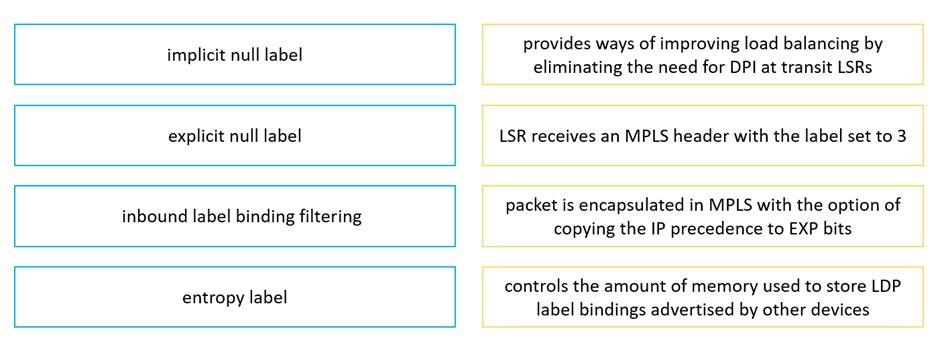
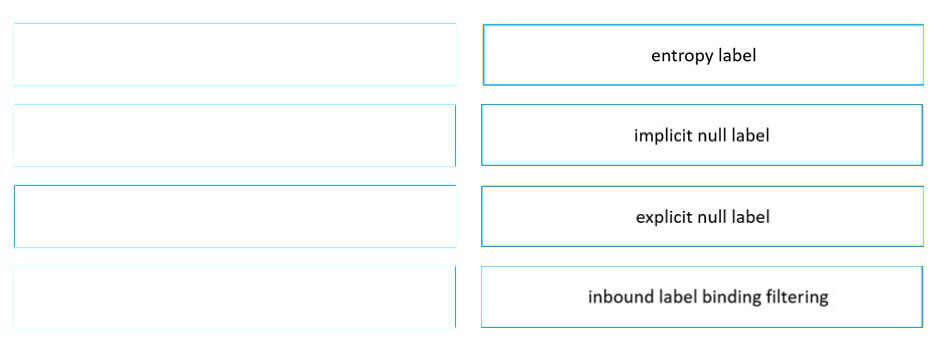
Which two protocols work in the control plane of P routers across the MPLS cloud? (Choose two.)
BC

Refer to the exhibit. An engineer has configured DMVPN on a spoke router.
What is the WAN IP address of another spoke router within the DMVPN network?
D
What are two functions of LDP? (Choose two.)
AB
DRAG DROP -
Drag and drop the operations from the left onto the locations where the operations are performed on the right.
Select and Place: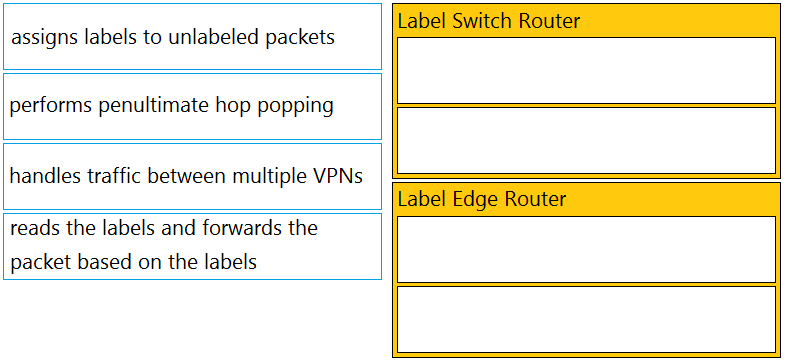
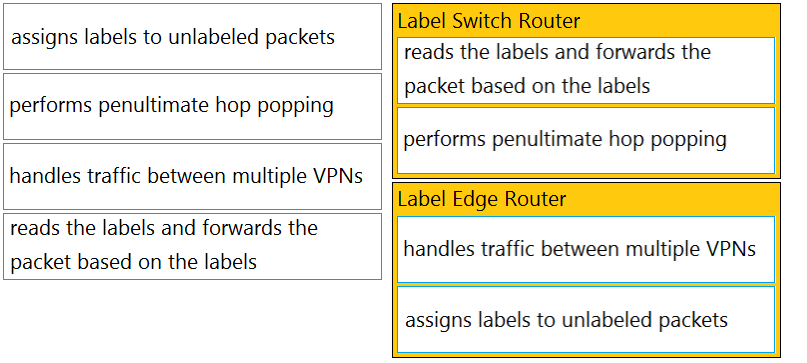
Which protocol does MPLS use to support traffic engineering?
B
An engineer configured a company's multiple area OSPF Head Office router and Site A Cisco routers with VRF lite. Each site router is connected to a PE router of an MPLS backbone:
Head Office & Site A -
ip cef
ip vrf abc
rd 101:101
!
interface FastEthernet0/0
ip vrf forwarding abc
ip address 172.16.16.X 255.255.255.252
!
router ospf 1 vrf abc
log-adjacency-changes
network 172.16.16.0 0.0.0.255 area 1
After finishing both site router configurations, none of the LSA 3, 4, 5, and 7 are installed at Site A router.
Which configuration resolves this issue?
D
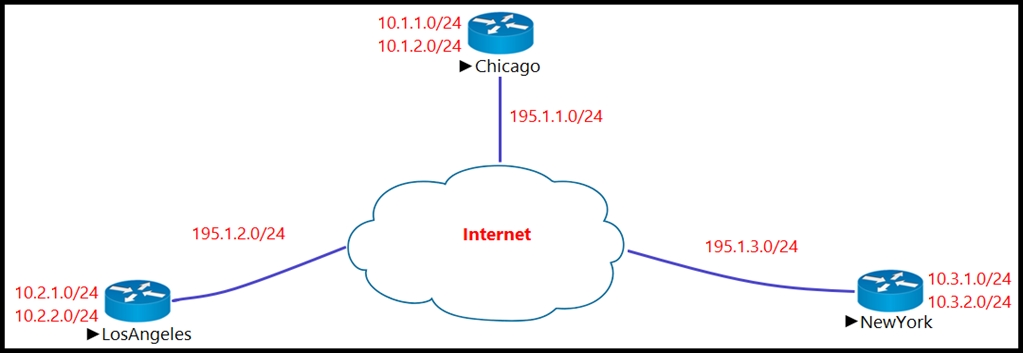
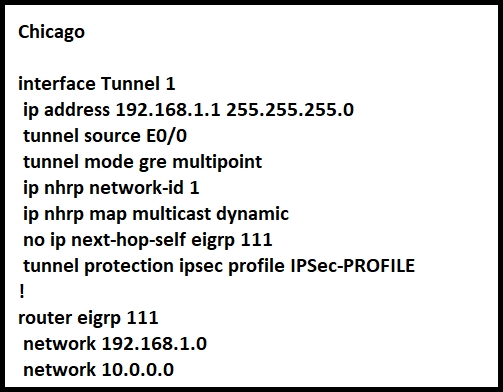
Refer to the exhibit. The Los Angeles and New York routers are receiving routers from Chicago but not from each other.
Which configuration fixes the issue?
A
DRAG DROP -
Drag and drop the MPLS VPN device types from the left onto the definitions on the right.
Select and Place:
